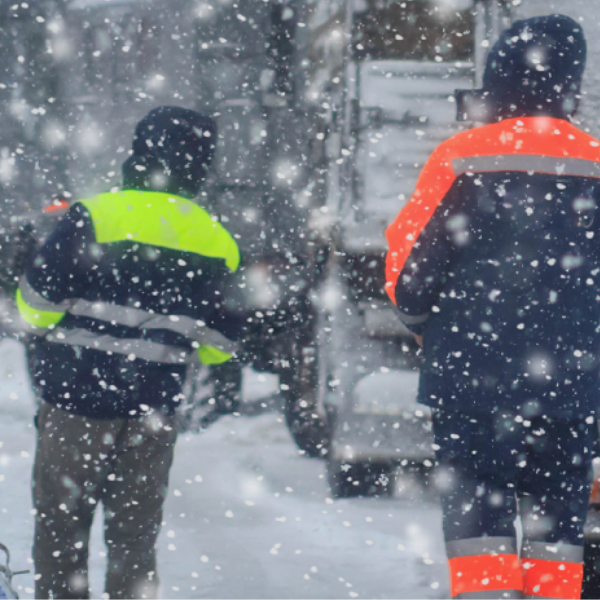
This month’s newsletter highlights safety tips for winter workers and provides strategies employees can use to protect themselves when using ladders.
Download the full edition of Safety Focused Newsletter
Winter Worker Safety Tips
Winter weather can create various hazards that include slippery surfaces and roads, strong winds and frigid temperatures. These conditions can promote an increase in workplace accidents that include hypothermia, frostbite and falls. However, many of those injuries can be prevented with the right preparation and presence of mind.
Prevention techniques are most effective when everyone in the organization makes safety a priority. The following measures can help keep you safe at work during the winter months:
- Keep walkways, stairways and other work areas clear of hazards, such as water on floors and snow on sidewalks. For hazardous areas that can’t be addressed immediately, mark them with temporary signs or barricades to warn others.
- Exercise caution when working outdoors. Wear footwear with heavy treads for increased traction, and make yourself visible to drivers by wearing a bright vest or jacket.
- Recognize the signs of hypothermia and frostbite. When working outside, it’s important to keep moving and perform moderate exercises to help you stay warm and maintain good blood circulation.
- Ensure you understand safety procedures related to winter driving if you are required to operate a vehicle as part of your regular duties. Above all, practice defensive driving techniques and inspect your vehicle before getting on the road.
Together, these tips can help you stay safe at work during the winter months. If you have questions or need additional information, contact your supervisor.
Ladder Safety at Work: 9 Helpful Tips
Falls from ladders are common workplace accidents—accidents that can lead to serious injuries, missed work and even death. Complicating the concern, ladders are used across many industries, often for simple, unsupervised tasks like painting, changing a lightbulb or reaching objects at height.
While ladders present serious fall and other hazards, these risks can be reduced significantly through simple precautions. When maintaining ladder safety on the job, employees should do the following:
- Check the load rating marked on the ladder. This rating should cover their weight and any tools they are using.
- Use the right ladder for the job, and check the length rating. In general, ladders should extend 3 feet above working surfaces.
- Check the condition of the ladder before using it. Employees should never use a ladder that has cracks or loose and corroded parts.
- Check the ladder’s stability. Ensure that all ladder feet are on a firm, level and dry surface.
- Do not lean too far to the side while working, and never overreach.
- Always face the ladder when climbing up or down it. Never leave a raised ladder unattended.
- Wear nonslip footwear at all times when on a ladder.
- Clear the work area. Never place a ladder in front of a door that isn’t locked, blocked or guarded.
- Use a wooden or fiberglass ladder near electrical equipment.
Depending on the type of ladder you are using, there may be specific safety considerations to keep in mind. To learn more, speak with your supervisor.

Operation Safe Driver Week
Operation Safe Driver Week is an annual seven-day initiative created by the CVSA to help

7/17 Panel Recap & Financial Insights
Stepping into summer 2024, the insurance landscape continues to present challenges and opportunities for businesses

Employee Spotlight: Adam Knapp
Seubert welcomes Adam Knapp to the agency’s Commercial Lines Division as a Technical Account Manager.

